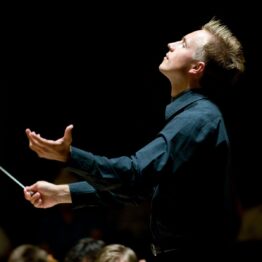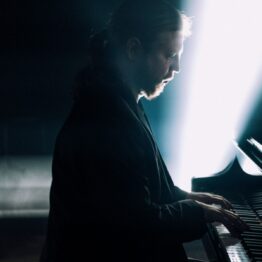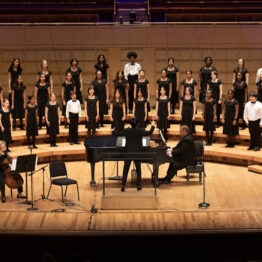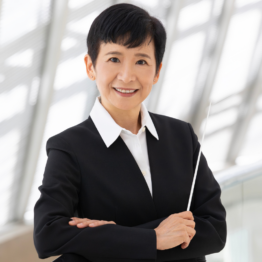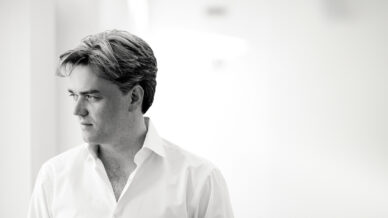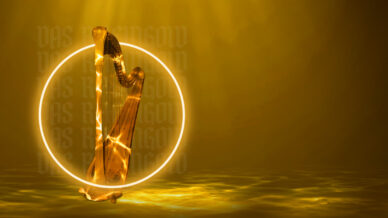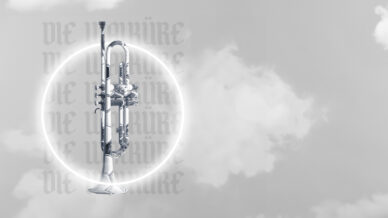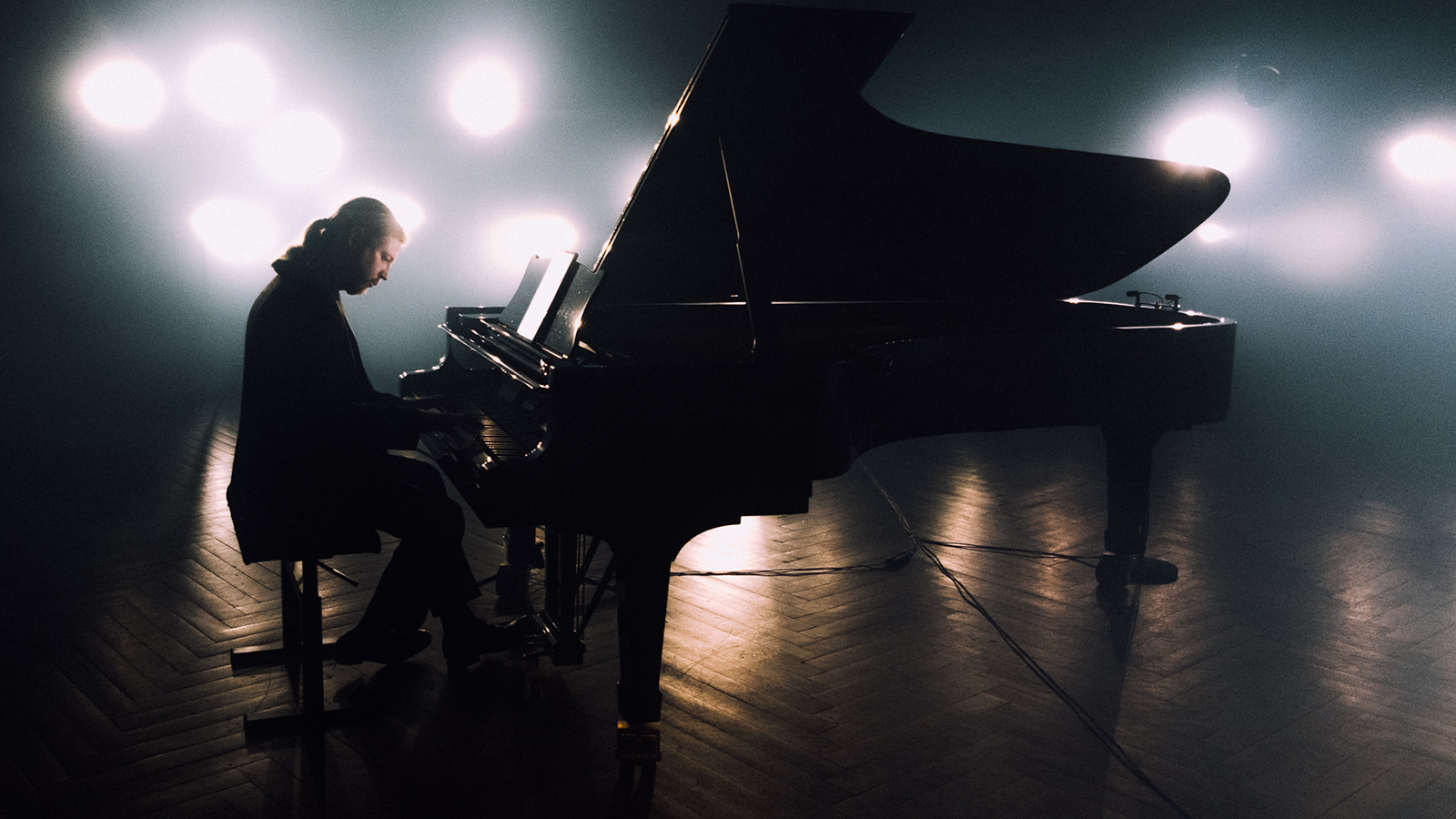

Prokofiev Piano Concerto No. 2
May 23 – 26, 2024
VASILY PETRENKO conducts
DENIS KOZHUKHIN piano
DALLAS SYMPHONY CHILDREN’S CHORUS
ELLIE LIN artistic director of DSCC
ANDREA BASEVI Four Poems by Emily Dickinson | DSO Commission, World Premiere
PROKOFIEV Concerto No. 2 in G minor for Piano and Orchestra
WALTON Symphony No. 1 in B-flat minor
Riveting. Virtuosic. Diabolical. Daredevil. Terrifying. Words that describe both Prokofiev’s Second Piano Concerto and Walton’s first symphony. The critic Harold Schonberg laid out the requirements for playing Prokofiev’s landmark work: “Steel fingers, steel biceps, steel triceps — a tonal steel trust.” (“…feats of prestidigitation from Denis Kozhukhin… ferocious energy… the octave leaps cast off as dizzyingly as any high-wire act” [BachTrack]). Meanwhile, Walton’s work premiered to critical acclaim for its commanding artistry and unflinching use of the power of the orchestra. Hang on to your seats for this one!
PERFORMANCE PRELUDES
Join us for a special pre-concert talk with Assistant Conductor Maurice Cohn! The talks will take place from Horchow Hall starting at 6:30pm on Thursday and Friday and 2:00pm on Sunday.

Program Notes
by René Spencer Saller
Andrea Basevi is a tenor, teacher, author, composer and choral director who specializes in children’s music. Born in Genoa, Italy, he earned undergraduate degrees in choral music, chorus conducting and composition from the Conservatory of Turin, then went on to study with Brian Ferneyhough at the Staatlische Hochschüle fur Musik, in Freiburg, Germany, and with Luciano Berio in Florence. Still not satisfied with his apprenticeship, he enrolled at the Accademia Musicale Chigiana, in Siena, where he completed a course in ethnomusicology under Simha Arom (b. 1930), a leading authority on the music of central Africa.
Basevi’s diverse experience and restless curiosity inform all his compositions, whether the performers are adults or children. Over the years he has composed music for the stage (the Repertory Theaters of Genoa and Turin), for radio (RAI, or Radiotelevisione italiana, aka the NPR of Italy), and for film (Centro Sperimentale di Cinematografia Rome). In addition to many songs, choral works and operas for children, he has written several music-education books for young readers, on such subjects as Western notation and orchestral instruments. He has directed choirs in primary schools throughout Genoa, as well as Le Piccole Voci of the Alessandria Conservatory and the Biblioteca De Amicis children choir with Roberta Paraninfo and the Laboratory of Paganini. He serves as president and artistic director of Music Association Sant’Ambrogio, which promotes contemporary music in Liguria and educational projects for children. He also teaches harmony and analysis at the Conservatory Paganini of Genoa.
As an educator, Basevi follows the general principles of the Kodály school of pedagogy, which was named after the Hungarian composer and ethnomusicologist Zoltán Kodály. The Kodály method emphasizes teaching folk music from the pupil’s native tongue and cultural traditions, starting in preschool with fun games and exercises that incorporate rhythmic movements and songs. Instead of pressuring the children to compete against one another, a Kodály teacher helps them discover music as a joyful and satisfying form of expression, a gift available to all human beings, regardless of individual talent or ability.
The singular poetry of American visionary Emily Dickinson (1830–1886) suits a children’s choir. Elusive and playful, more gnomic than naive, her lines sing and zing, seducing the ear with a deceptive simplicity, following familiar, hymn-based, iambic cadences that may bring to mind “The Yellow Rose of Texas.” Studded with dashes, Dickinson’s stanzas tumble out in epiphanic bursts and breathless exclamations. Her language delights in weirdness and mocks dogma, resisting analysis and paraphrase. Using repetition and dynamic variation, Basevi luxuriates in Dickinson’s slant rhymes (“bee” and “revery”), conjuring up a delirious pastorale out of sibilant breath sounds, contrapuntal buzzing, whooshing glissandi and simulated bird calls. At one point the altos sing Dickinson’s lines while the sopranos whistle, chirp and twitter; then the singers trade parts, with the sopranos handling the words and the altos the sound effects, colluding in a disorienting but blissful stereophonic effect, as if you’re listening to nature’s orchestra from the middle of a meadow—lost in reverie, sure, but attuned to the same vital frequencies as the birds and bees.
The Composer Speaks “I am doubly happy about this commission from the DSO and my friend Fabio Luisi. The first happiness is the pleasure of writing music for children, a joyful aspect of my life for many years. The second is that this commission is included in a symphony concert directed and performed by such extraordinary musicians.
“Because writing music dedicated to young people is a mission, we must choose lyrics thoughtfully and respectfully. Emily Dickinson’s poetry is made up of small things linked to nature, birds and memories, concepts that seem to have inhabited the human soul forever and are found in my music through the lightness with which I have tried to treat the pure song of children’s voices. I entrusted the children with the task of creating an evocative outline using breath sounds, birdsong, and brief folk-style melodies. The orchestra plays its own commentary on the text, offering different meanings and interpretations.
“The four songs make up a cycle. In the first song the wind enters the children’s voices like memories of a sweet grandfather, bringing ancient melodies. In the second the buzz of bees in a green meadow conveys a sense of lightness and light. In the third the children’s voices unite with those of the birds to create a passionate and festive song. The last one deals with the powerful emotions that our memories elicit and the sweetness of what remains. I tried to enter Dickinson’s poetic world, in small steps, with great lightness and humility.”
“Throughout the composition process, I was inspired by the Dallas Symphony Children’s Chorus, directed by the talented Ellie Lin, to whom this work is dedicated. I am grateful to all the extraordinary people at the DSO who worked on the project that you will listen to today. Thank you all so much.”
—Andrea Basevi (translated from Italian)
William Walton first attracted notice as a composer in the bohemian literary circle of the celebrated Sitwell siblings—Edith, Sacheverall and Osbert—who befriended him not long before he flunked out of Oxford. Starting in the late 1920s, Walton began gravitating to more conventional forms, beginning with a Viola Concerto that was rejected by its dedicatee, Lionel Tertis, and performed instead by fellow composer (and exceptional violist) Paul Hindemith, whose brilliant interpretation brought Walton his first mainstream success.
Before Walton completed his Symphony No. 1, he had already finished his opulent jazz-inflected oratorio Belshazzar’s Feast and felt capable of scoring for a huge orchestra. He worked on the symphony intermittently for nearly four years, beginning in 1931, and completed it in 1935, when he was 33 years old. During this emotionally volatile period, he was recovering from the breakup of a five-year love affair with a married woman, the Baroness Imma von Doernberg.
The fourth movement wasn’t finished in time for the scheduled premiere, in late 1934, so only the first three movements were performed. Walton put the project on hiatus in 1934 while he composed his first film score, which would become a lucrative sideline for him. After several months, he returned to his symphony and completed the final movement in August of 1935. The BBC Symphony Orchestra performed the premiere of the complete, four-movement version on November 6 of that year. According to a contemporary newspaper review, “The applause at the close was overwhelming, and when Mr. Walton, a slim, shy young man, came on to the platform he was cheered continuously for five minutes.
A Closer Listen
Although Walton’s critical reputation waxes and wanes, his Symphony No. 1 remains a consensus favorite. As the late musicologist Michael Steinberg observed, “Not many would wish to call Walton one of the great 20th-century composers, but the claim that his First Symphony is one of the great 20th-century symphonies is not excessive.”
The first movement is seething and darkly sensual, with jittery rhythms, keening melodies, and obsessive figurations. This Allegro assai is meant to disorient and destabilize you, not cheer you up.
The two interior movements offer new surprises. Darker than the typical scherzo, the second movement is marked “presto, con malizia” (quick, maliciously). A rough minuet, it enacts a series of thematic transformations. Intimate and intense, the slow movement is marked Andante con malincolia (flowing, with melancholy) and set in C-sharp minor. A wistful flute introduces a series of variations based on an abandoned idea from the opening Allegro. The clarinet and oboe also take poignant turns in obbligato roles. The mood ranges from anguished to elegiac, shading in every emotional nuance.
The finale starts out majestically, with an ascending brass motive, and then digresses, jazz-like, into a fugal passage; at the climax, the piccolo twitters a frenetic ostinato while the timpani thunders and the tam-tam clangs. Aside from the timpani, the percussion instruments are withheld until the final pages. Walton was probably joking when he pronounced this last movement “a piece for the mob,” but only a joyless prig could resist the thrilling coda.
The original version of Prokofiev’s Second Piano Concerto caused a minor uproar at its 1913 premiere: one eternally quotable heckler reportedly shouted, “To hell with this futuristic music! The cats on the roof make better music!” A contemporary newspaper account described audience members as “frozen with fright, hair standing on end.” Adding insult to injury, the only copy of the score was destroyed in a fire during the Russian Revolution, which meant that Prokofiev had to reconstruct the composition entirely by memory a decade after he first committed it to paper, making his Second Piano Concerto also, in a sense, his Fourth, as he explained to friends at the time.
We can’t compare the version we know today to the original, so we’ll have to trust Prokofiev’s judgment that the 1923 reconstruction was an improvement. By that point, he had played the concerto a few times in concert before setting it aside, so he knew its strengths and weaknesses. He had also finished his Third Concerto by that point—which remains far more popular than the Second, although nearly as demanding on a technical level and had matured as a stylist, relying less on shock-and-awe stunts and more on emotional depth and psychological complexity. He was a better contrapuntist, too, a point he emphasized when comparing the two iterations of the concerto. He also noted that he made “the form more graceful—less square.” Prokofiev debuted the new version in Paris, in May 1924, with himself as soloist and Serge Koussevitzky at the podium.
Prokofiev had finished the first version of the Second Piano Concerto as a 22-year-old undergraduate, a self-styled enfant terrible. He dedicated it to his closest friend at the Saint Petersburg Conservatory, Max Schmidthof, whom Prokofiev respected for his knowledge and discernment. Prokofiev recorded in his diary that he played parts of the concerto for Schmidthof: “He likes the third movement and especially the first movement cadenza. The Finale elicited vociferous approval; I had to repeat the opening theme three times.”
Sadly, not long after Prokofiev finished the concerto and before the 1913 premiere, Schmidthof took a train into a forest in Finland and shot himself, after mailing Prokofiev and one other person a copy of his suicide note. He was reportedly distraught over the ruinous debt that he had accumulated, which had left him and his mother destitute. “I am writing to tell you the latest news,” he announced. “I have shot myself….The reasons are unimportant.”
The Composer Speaks
“Following the violent concluding chord there was silence in the hall for a few moments. Then boos and catcalls were answered with loud applause, thumping of canes and calls for ‘encore.’ I came out twice to acknowledge the reception, hearing cries of approval and boos coming from the hall. I was pleased that the concerto provoked such strong feelings in the audience.”
—Prokofiev (from a diary entry describing the 1913 premiere)
“I come out to play in a more or less calm frame of mind. But I do not manage to stay calm during the most difficult parts: in the cadenza (specifically where I mark colossale), and at the beginning of the third movement, where the hands keep jumping over one another, I play badly. However, the rest I play well and with enthusiasm.”
—Prokofiev (from a diary entry describing a 1927 performance of the reconstructed concerto).
A Closer Listen
The Second Piano Concerto is notoriously difficult, so demanding from a technical perspective that many of the world’s finest virtuosos won’t attempt it. Even the great Martha Argerich has never performed it. Big and blustery, it comes in like a lion and goes out like a bigger, badder lion, strutting its apex-predator stuff all the while. But amid all the panic-inducing passagework and grand chordal intrigue, Prokofiev gives us subtle, often sardonic moments, too, infused with Gallic wit and neoclassical panache. Sometimes, as with the hypnotic hollow bell tones in the Finale: Allegro tempestoso, he almost seems to predict the tintinnabular music of Arvo Pärt.
Scored for an enormous orchestra and set in four movements instead of the conventional three, the Second Piano Concerto isn’t just a workout for overachieving concertizers, although it’s certainly that, insofar as it would be impossible for a second-rate pianist to pull off. Beyond the terrifying technical demands, it requires a great deal of interpretive finesse, not only from the soloist but also from each member of the orchestra. Take the second-movement scherzo, which goes from delicate Messiaen-esque excursions to pianistic proto-punk, pounding out a punishing onslaught of block chords and infernally fast runs in a mere six or so minutes of constant motion. Although the first version of the concerto was completed before the dedicatee’s tragic suicide, it’s tempting to interpret Prokofiev’s score as the raw transcription of the grief process, ticking off all of its excruciating, overlapping, and recurring stages, from rage to misery, denial and stunned acceptance. Whatever the impetus, this concerto sounds too harrowing to be a showpiece. Despite moments of unadulterated lyricism, as in the tender, folk-inflected secondary themes of the outer movements, it’s more exorcism than elegy.
